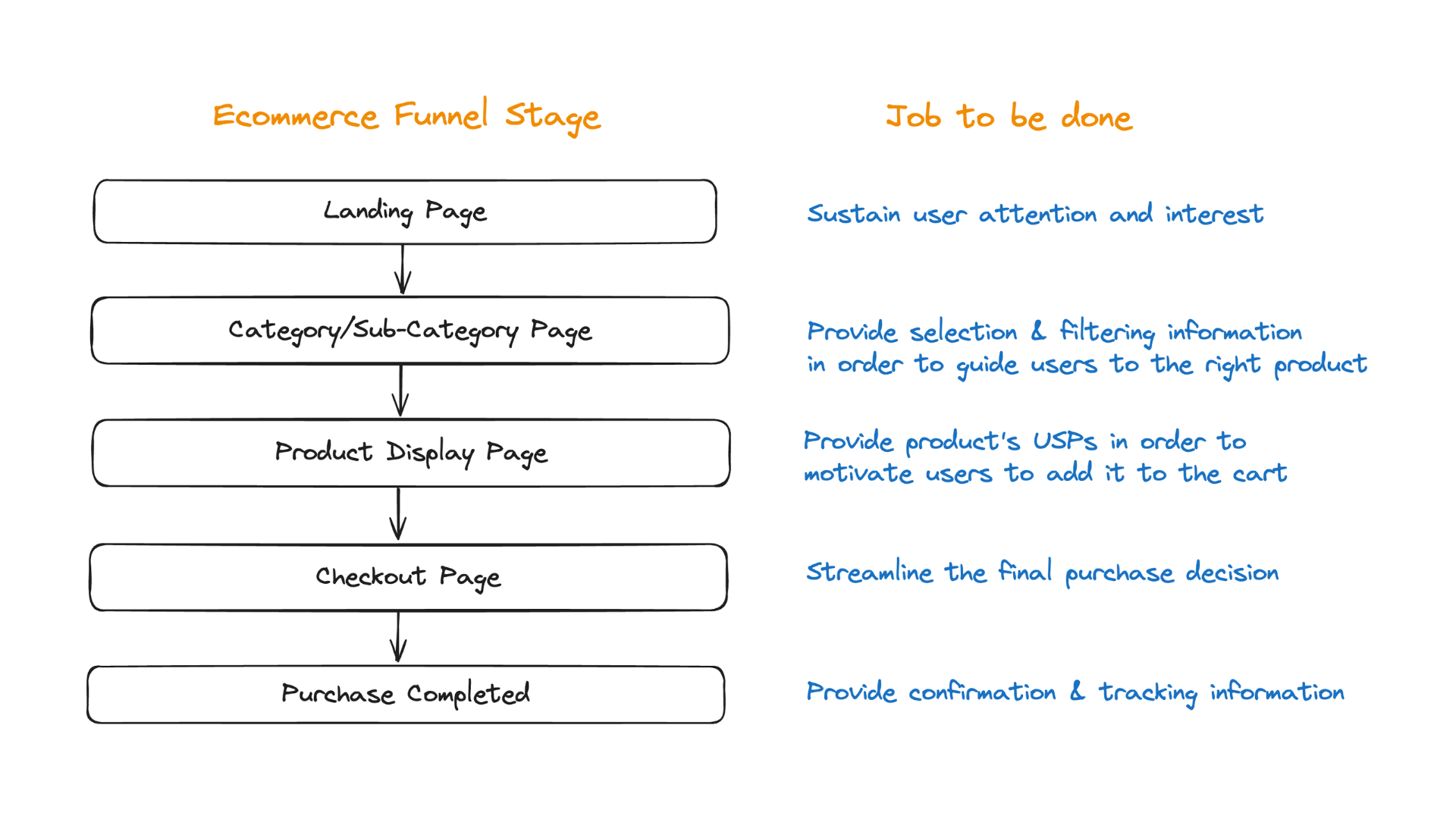How to use Content to Enhance User Activation in Ecommerce Brands and Marketplaces?
The concept of job to be done revolves around understanding the specific needs or problems customers are trying to solve at various stages of their interaction with a product or service.
In the context of activation, it's about identifying what users need at each stage of their journey to encourage them to take the next step. This approach helps in crafting a content strategy that’s not just informative but also nudges users towards activation by fulfilling their needs and solving their problems at each stage.
Let's go through different funnel stages for e-commerce, identify the job-to-be-done at respective stage, and the potential activation levers accordingly.

Landing Page:
☞ Job-to-be-Done: Sustain user attention and interest.
☞ Content Tactics: Utilize engaging visuals and compelling value propositions to quickly explain more on the unique selling proposition (USP) of the brand/product. In case of ad-driven traffic, it's imperative that the visuals and the USP are in coherence with the advertisement.
Category/Sub-Category Page:
☞ Job-to-be-Done: Guide users to the right product.
☞ Content Tactics: Provide clear and descriptive product category names along with helpful sub-category content. Targeted messaging can guide user decisions, like highlighting the latest trends in a tech gadget category.
Product Display Page:
☞ Job-to-be-Done: Motivate users to add products to the cart.
☞ Content Tactics: Detailed descriptions, quality images, and user reviews can build trust. Emphasizing unique features or limited-time offers can encourage action.
While there might be a lot of information to be conveyed in this page/screen, it is important to prioritise the information that needs to be in the first fold, depending on context of the product/brand.
For example, a lifestyle product page might include immersive stories about the product's origin and craftsmanship.
Checkout Page:
☞ Job-to-be-Done: Streamline the final purchase decision.
☞ Content Tactics: Clear, reassuring content around security, return policies, and support can ease final purchase anxieties. For instance, reassuring messages about secure checkout and easy returns can help reduce cart abandonment.
Takeaway:
Instead of catch-all solutions to improve activation rate, one must first benchmark drop-off rates at different stages, as well as collect qualitative data from customer interactions, to identify the improvement areas.
After the right funnel stage has been prioritised, the solutions can target the job to be done at that specific stage.